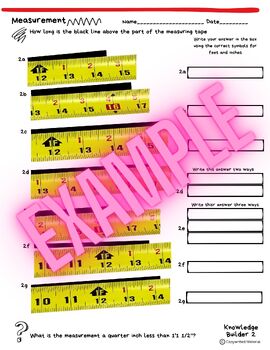Measuring Tape Book 5: Math, Fractions to 16ths , Converting Inches to Feet, CTE
- PDF
Also included in
- This is Product is what I used in my Career Tech Classroom but it could be used in any classroom to work on reading measurements and conversions from inches to feet and inches.is a bundle of the 6 part series. Practice this lesson throughout the year and build that muscle memory. In this book, studePrice $20.00Original Price $30.00Save $10.00
Description
This is Product is what I used in my Career Tech Classroom but it could be used in any classroom to work on reading measurements and conversions from inches to feet and inches. This book 5 in a series of 6 books that get increasingly more difficult. This book focuses on 16ths and requires writing the answer multiple ways at times. Practice daily to build that muscle memory. They will soon be bundled. Trade jobs will be in HIGH demand in the future and reading a measuring tape and understanding fractions is crucial.
There is a list of typical struggles encountered by learners when working with measurement and teaching objectives. Each page also includes a higher order thinking question and those are also include on one page at the end with an answer key for assessment purposes. There are implementation guides too!
Whendoesshesleep.com






